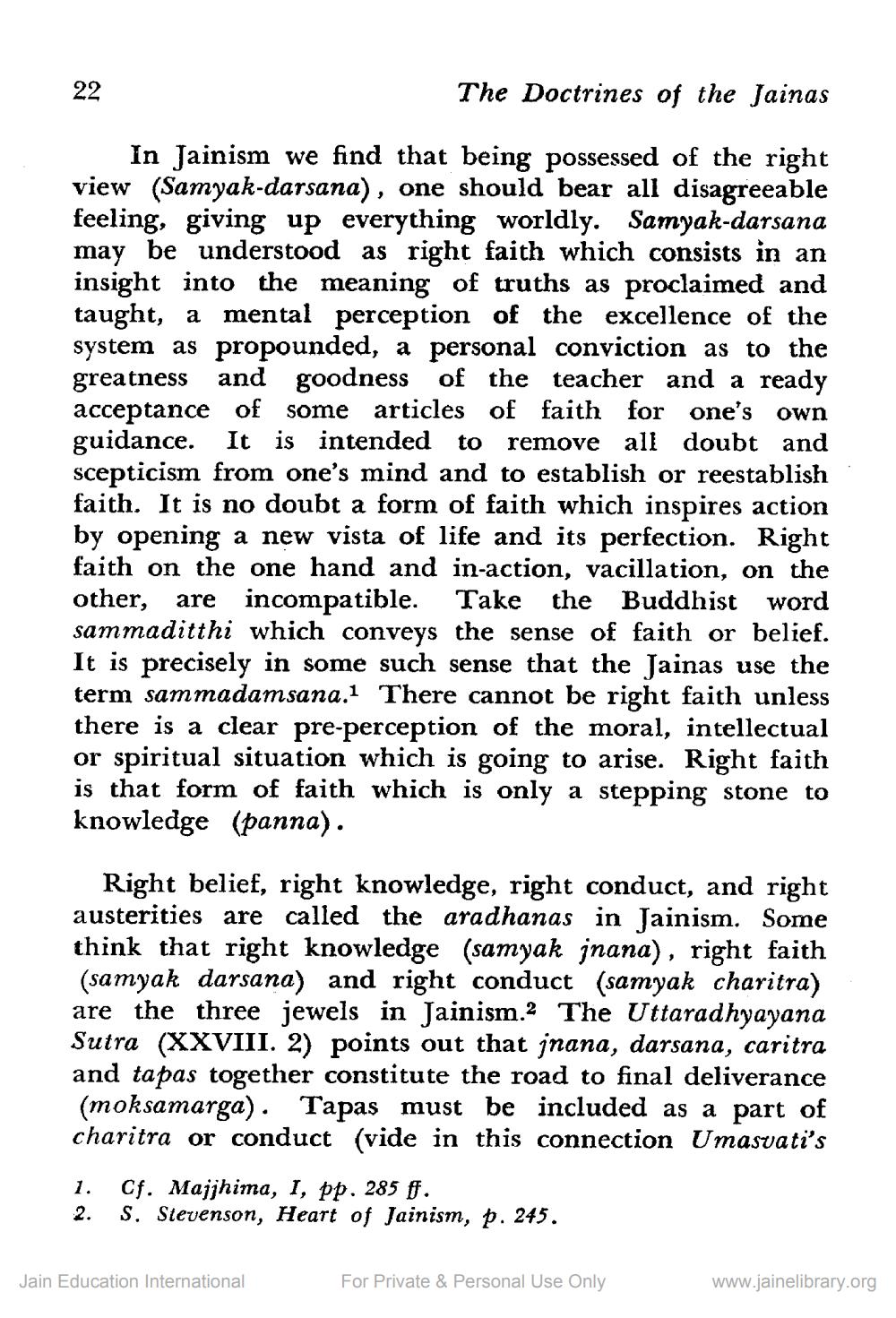________________
22
The Doctrines of the Jainas
In Jainism we find that being possessed of the right view (Samyak-darsana), one should bear all disagreeable feeling, giving up everything worldly. Samyak-darsana may be understood as right faith which consists in an insight into the meaning of truths as proclaimed and taught, a mental perception of the excellence of the system as propounded, a personal conviction as to the greatness and goodness of the teacher and a ready acceptance of some articles of faith for one's own guidance. It is intended to remove all doubt and scepticism from one's mind and to establish or reestablish faith. It is no doubt a form of faith which inspires action by opening a new vista of life and its perfection. Right faith on the one hand and in-action, vacillation, on the other, are incompatible. Take the Buddhist word sammaditthi which conveys the sense of faith or belief. It is precisely in some such sense that the Jainas use the term sammadamsana.1 There cannot be right faith unless there is a clear pre-perception of the moral, intellectual or spiritual situation which is going to arise. Right faith is that form of faith which is only a stepping stone to knowledge (panna).
Right belief, right knowledge, right conduct, and right austerities are called the aradhanas in Jainism. Some think that right knowledge (samyak jnana), right faith (samyak darsana) and right conduct (samyak charitra) are the three jewels in Jainism.2 The Uttaradhyayana Sutra (XXVIII. 2) points out that jnana, darsana, caritra and tapas together constitute the road to final deliverance (moksamarga). Tapas must be included as a part of charitra or conduct (vide in this connection Umasvati's 1. Cf. Majjhima, I, pp. 285 f. 2. S. Stevenson, Heart of Jainism, p. 245.
Jain Education International
For Private & Personal Use Only
www.jainelibrary.org




